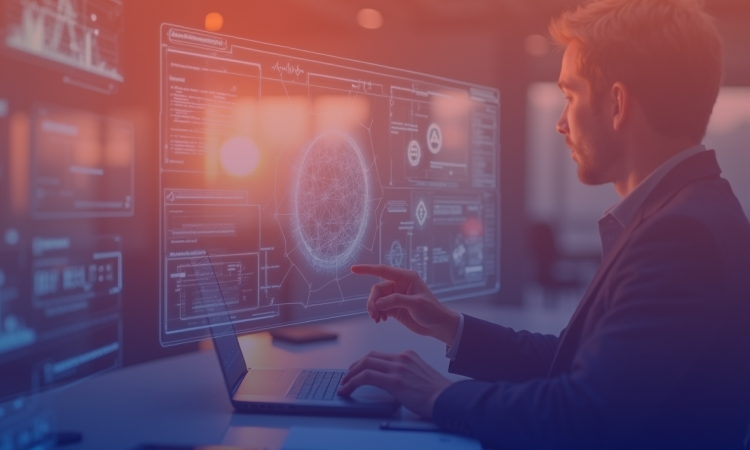Introduction
In 2025, the modern intranet is transforming from a static content repository into an intelligent workspace companion. Artificial Intelligence (AI) and Copilot-style assistants have changed how organizations collaborate, share knowledge, and communicate internally. These technologies are increasingly becoming core features that shape how employees work, learn, and make decisions.
By embedding AI-driven tools directly into intranet ecosystems, businesses are enabling smarter automation, contextual insights, and hyper-personalized experiences. This article explores how leading platforms are integrating generative AI and Copilot capabilities, what that means for productivity and engagement, and how organizations can prepare for this new era of intelligent collaboration.
How Generative AI and Copilot Are Transforming the Intranet
Generative AI systems can create content, summarize text, interpret queries, and deliver personalized recommendations, all in natural language. Copilot, popularized by Microsoft, describes embedded AI assistants that proactively help users draft, organize, and act within familiar applications.
Within intranet platforms, these capabilities enable teams to:
- Automate communications: Instantly generate meeting summaries, reports, and status updates
- Enhance search and discovery: Interpret intent and surface the most relevant information or experts
- Assist with content creation: Draft, translate, or reformat internal content for different audiences
- Guide collaboration: Suggest actions, flag follow-ups, and help employees manage priorities
The result is a more dynamic and responsive digital workplace, which is especially valuable in hybrid and remote environments where speed, clarity, and accessibility are critical.
Leading Platforms Integrating AI and Copilot Features
A growing number of intranet and workplace platforms are embedding AI deeply into their ecosystems. Among the most influential are Microsoft, Google, and Xerox, each taking a distinct approach.
Microsoft Viva
Viva combines collaboration, learning, and employee experience under the Microsoft 365 umbrella. With Copilot for Microsoft Viva, employees can generate messages, find resources, and summarize discussions directly in Teams or Outlook. Viva’s integration with the Microsoft Graph enables contextual recommendations, such as learning modules based on current projects or AI-driven suggestions to improve meeting habits.
Google Workspace
Google continues to embed generative AI through its “Help me write” and “Help me organize” features across Docs, Gmail, and Sheets. The platform’s smart suggestions and automated agenda generation support both individual productivity and team coordination. Its generative AI tools are seamlessly woven into daily workflows, making them accessible to users without disrupting established habits.
Xerox Workplace Solutions
Xerox is leveraging its legacy in document management to deliver AI-powered content and workflow automation. Its tools help enterprises extract insights from large document sets, streamline approval chains, and improve knowledge retrieval. These are all critical for compliance-heavy industries. These innovations bridge the gap between traditional content management and intelligent digital workplace systems.
Other innovators such as Workvivo by Zoom, Happeo, and Simpplr are also exploring generative AI to enhance employee engagement, internal storytelling, and collaboration analytics.
Practical Applications and Implications
The integration of AI within intranets is already reshaping everyday workflows.
- For employees, repetitive administrative tasks are being offloaded to intelligent assistants, allowing more time for creative and strategic work. An AI Copilot can summarize project updates, recommend related resources, or even help draft a customer-facing proposal based on internal knowledge.
- For managers and leaders, AI delivers data-driven insights into engagement, productivity, and collaboration patterns. Alerts and suggestions highlight where teams may be overloaded or where knowledge silos are forming, which helps decision-makers act faster and more effectively.
This convergence of automation and intelligence is fostering workplaces that are more informed, agile, and connected.
Challenges and Considerations
Despite the benefits, the integration of generative AI and Copilot into intranets raises various challenges. Some of them are:
- Privacy and Security: Protecting sensitive communications and maintaining data governance standards is essential.
- User Adoption: Employees need transparency about how AI tools work and why they can be trusted. Clear guidance and training are key to building confidence.
- Customization and Flexibility: Businesses should ensure intranet platforms can adapt AI features to match their workflows, regulatory requirements, and internal cultures.
Balancing automation with human judgment remains vital to achieving sustainable AI success.
Emerging Trends: What’s Next for AI-Powered Intranets
Several trends are expected to influence the next phase of AI-driven workplace transformation:
- Voice and multimodal interaction: Employees will soon query intranets through voice, visuals, or chat-based prompts.
- Hyper-personalized dashboards: AI will tailor intranet feeds and insights into individual goals, roles, and preferences.
- Transparent AI governance: Explainability, bias detection, and responsible AI design will move to the forefront of enterprise strategy.
These developments signal a shift toward truly adaptive workplace ecosystems that learn and evolve with their users.
Conclusion
The convergence of generative AI and Copilot technologies is redefining what an intranet can be, transforming it from an information archive into a collaborative intelligence layer within the enterprise.
Platforms like Microsoft Viva, Google Workspace, and Xerox Workplace Solutions are setting the pace by embedding AI at the heart of daily workflows.
For organizations invested in customer experience, product innovation, and digital transformation, embracing this shift offers a path toward greater efficiency, engagement, and insight. The next generation of intranet platforms will go beyond connecting employees and also amplify how people think, collaborate, and create together.

